I'M FINE, THANKS.
(DANKE, GUT.)
(DANKE, GUT.)
The perception of mental illness is a very pressing issue in today's society. While suffering from mental illness is a constant struggle
in itself, the stigma that comes with it makes affected people's lives additionally difficult. A majority of people feel some degree of shame associated with mental illness. As a result, most of the people affected don't seek out professional help or any help at all. In fact, about 40% of the population suffer from mental illness at least once in their lifetime. Only 30% of them seek out any form of treatment and only 10% receive adequate professional treatment. To fight the stigma associated with mental illness, the most affective way is to inform. Information breaks the taboo and fights discrimination and prejudice.
in itself, the stigma that comes with it makes affected people's lives additionally difficult. A majority of people feel some degree of shame associated with mental illness. As a result, most of the people affected don't seek out professional help or any help at all. In fact, about 40% of the population suffer from mental illness at least once in their lifetime. Only 30% of them seek out any form of treatment and only 10% receive adequate professional treatment. To fight the stigma associated with mental illness, the most affective way is to inform. Information breaks the taboo and fights discrimination and prejudice.
This is why I decided to create a kind of guide, which explains common mental illnesses via text and images. There are 21 illustrations, each created in a different style to fit the disorder. Each of them is accompanied by a text which includes a brief description of the disorder and its symptoms, prevalence rates and treatment methods.
As the title I chose the usual answer to the question "How are you?", which is "fine, thanks" (and translates to "danke, gut" in German).
It doesn't necessarily mean that one actually is fine, but it is the expected answer to a question, which in today's society usually does not seem to be meant sincerely.
It doesn't necessarily mean that one actually is fine, but it is the expected answer to a question, which in today's society usually does not seem to be meant sincerely.
ILLUSTRATIONS
The 21 illustrations represent the following mental disorders (in this order):
depression, mania, bipolar affective disorder,
anorexia nervosa, bulimia nervosa, binge eating disorder,
social phobias, specific phobias, agoraphobia,
panic disorder, generalized anxiety disorder, obsessive-compulsive disorder
ADHD/ADD, anankastic personality disorder, borderline personality disorder,
insomnia, dementia, somatoform pain disorder,
schizophrenia, substance addiction, post-traumatic stress disorder





















THE BOOK
Using Japanese binding made it possible to connect images and text in a new way: Each illustration filled a spread. Descriptions of the disorders, symptoms and prevalence rates were put on separate sheets of paper in the fold between the book pages. Cards with names and short descriptions of the disorders peeked out at the top – ready to be pulled out when more information was needed.
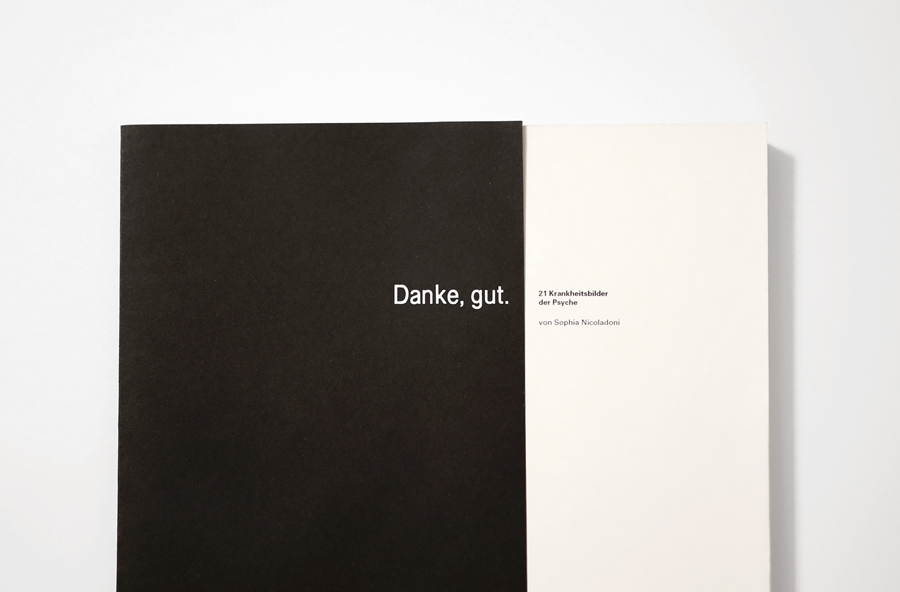
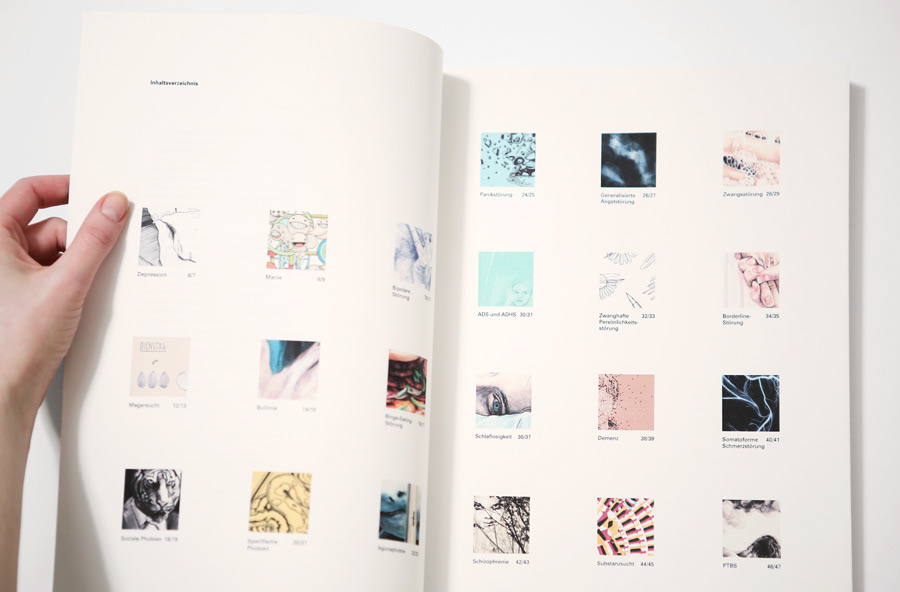
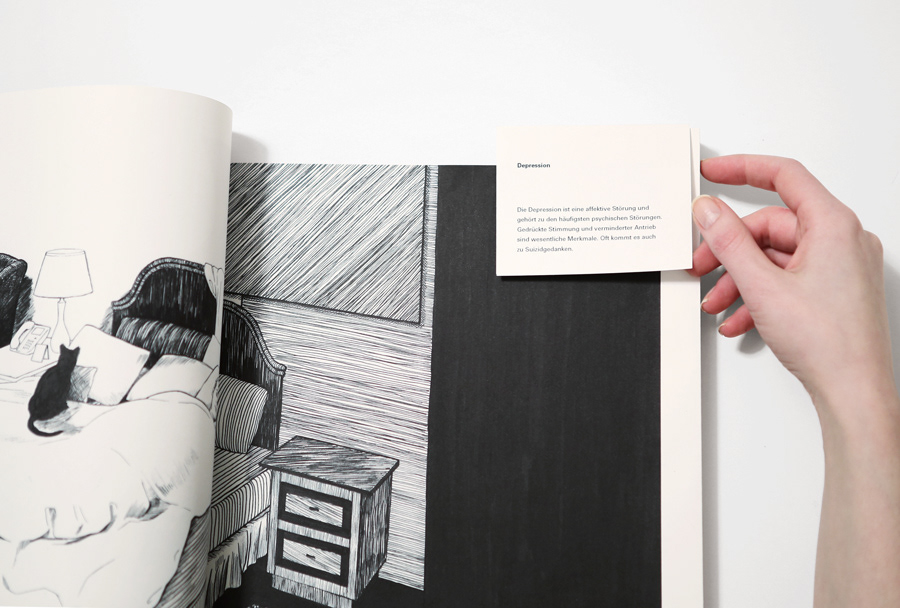
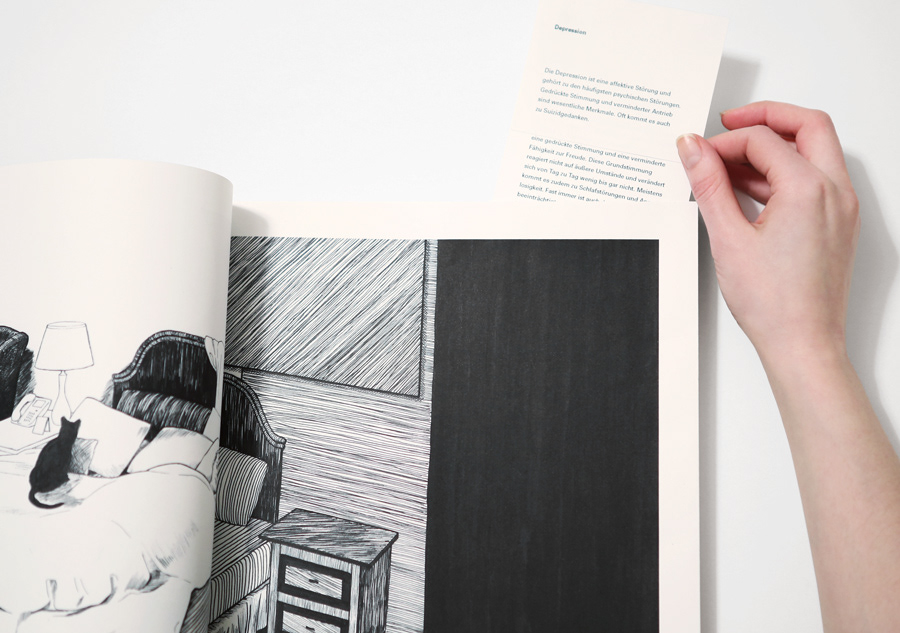
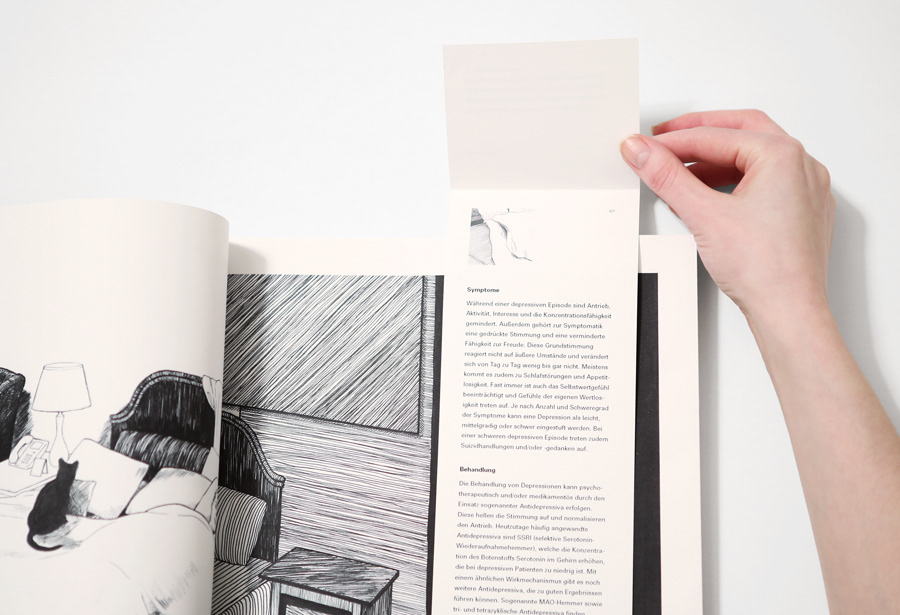
THANK YOU

